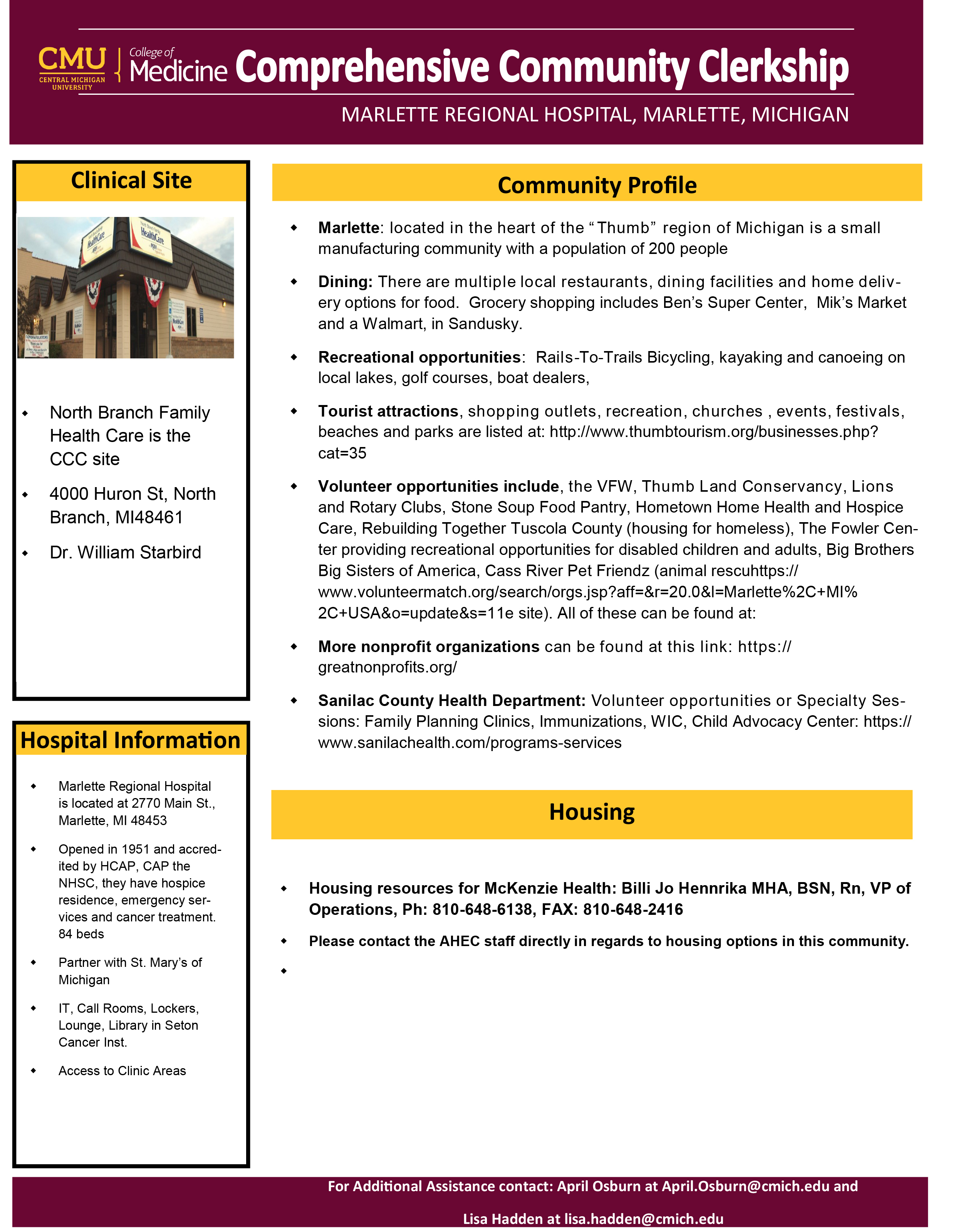Mid-Central AHEC Flexes its Community and Economic Development Expertise to Support Health Professions Students in Clinical Rotations
 AHECs nationally are known for their deep community connections and expertise in community engagement. The Mid-Central AHEC is no exception and recently completed over fifty community profiles for third year medical students participating in six month clinical rotations around the state. As part of a team in partnership with the CMU medical school developing and expanding Comprehensive Community Clerkship sites, the Mid-Central AHEC staff requested copies of community profiles where students were to be placed for six months during their third year. Upon learning these were not available, the Mid-Central AHEC went to work.
AHECs nationally are known for their deep community connections and expertise in community engagement. The Mid-Central AHEC is no exception and recently completed over fifty community profiles for third year medical students participating in six month clinical rotations around the state. As part of a team in partnership with the CMU medical school developing and expanding Comprehensive Community Clerkship sites, the Mid-Central AHEC staff requested copies of community profiles where students were to be placed for six months during their third year. Upon learning these were not available, the Mid-Central AHEC went to work.
In the last six months, over 50 community profiles with standardized formats were created by Mid-Central to provide important information for students living primarily in rural communities while in their clerkship rotations. The profiles were community specific with richly detailed and heavily researched information to deliver the most current access to housing options, dining availability, best grocery shopping outlets, recreational opportunities, tourist attractions (what the area is known for) and opportunities for community volunteerism, engagement and service learning. Students will be asked to review the information with each rotation so the community profiles become a working document, continuously updated by student input.
In addition, the profiles contain information regarding individual clinical practices where students are placed for learning along with their preceptor and the care team. AHEC staff learned many care teams were comprised of a physician, a physician assistant, a nurse practitioner and frequently a behavioral health specialist. This opens up the possibility of identifying future placement opportunities for nursing students and other health professions students seeking sites for clinical rotations.
However, out of all these, housing opportunities were the most difficult to identify. In many rural communities, housing options are primarily private, low-income or senior housing. Finding apartment complexes or rentals that would accommodate medical students for six month leases proved to be challenging. Many times the Mid-Central AHEC staff members called friends, colleagues and family members around the state to identify a family cottage rental or available housing unit for a medical student. As a result, the Mid-Central AHEC contacted its partners in county and state economic development programs for assistance and is now working with a small task force at the Michigan Economic Development Corporation, specifically created to identify housing and assist small towns in rental rehab projects for student rotations in clerkship sites. It is exciting to have a state level group supporting the concept of developing housing options for health professions students. This premise also aligns with the Governor's mission to develop opportunities for more health professionals to train in small towns and rural communities with an eye towards long term recruitment. The Mid-Central AHEC staff will monitor the progress of this group and expand its efforts so health profession students can find housing, become integrated into rural community life and feel like a true part of the community while seeing patients in the local clinic.